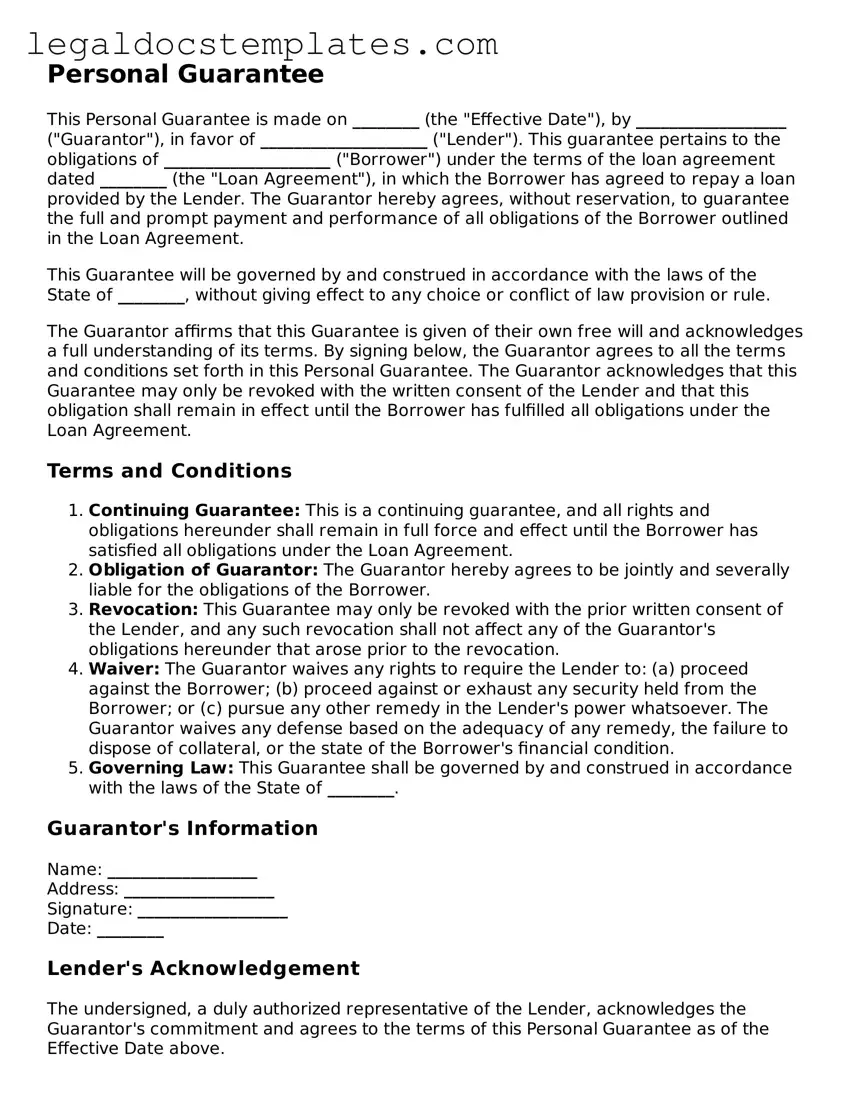A cosigner agreement is quite like a personal guarantee form because both involve someone else taking on the responsibility to pay back a debt if the primary borrower fails to do so. In both cases, the individual who agrees to this responsibility (either as a guarantor or a cosigner) provides a safety net for the lender. The core difference often lies in the context they are used; personal guarantees are common in business loans, while cosigner agreements are frequently seen in personal loans.
Surety bonds share a foundational similarity with personal guarantee forms. Both serve as a financial promise that a specific obligation will be fulfilled, either by performing a duty or repaying a debt. The surety bond involves three parties (the principal, the obligee, and the surety) where the surety guarantees to the obligee that the principal will fulfill their obligation. This tri-party setup is a contrast to the direct, two-party commitment seen in personal guarantees.
The indemnity agreement parallels personal guarantee forms in its function of one party agreeing to protect another from certain losses and damages. This protection typically comes into play if specific actions result in financial loss or legal entanglement. While an indemnity agreement might be broader or more specific in context, both it and personal guarantees provide a level of financial security and risk management for the involved parties.
Similar to personal guarantee forms, promissory notes are written agreements related to the borrowing and repayment of money. In a promissory note, the borrower agrees to pay back a sum to the lender under outlined conditions. Although promissory notes usually involve just the primary parties in the transaction, the essence of promising to fulfill a financial obligation aligns closely with the aim of personal guarantees.
Mortgage agreements also share key elements with personal guarantee forms. Specifically, they both involve a pledge to fulfill an obligation (repayment of a loan). In a mortgage, the loan is secured against a property, making the property collateral that the lender can claim if the borrower defaults. The personal guarantee adds a layer of assurance for repayment, much like the property secures the loan in a mortgage agreement.
Lease agreements, while primarily used for renting property, have a similarity to personal guarantee forms in terms of ensuring obligations are met. If a lease agreement includes a personal guarantee, the guarantor is responsible for covering rent payments if the primary lessee fails to pay. This dual structure of obligation is seen in both lease agreements and personal guarantee forms whenever there's a risk of non-fulfillment.
A pledge agreement, much like a personal guarantee, involves a commitment to ensure the fulfillment of a duty or payment. In the context of a pledge, an asset is put up as collateral to secure a loan or obligation. While the pledge directly involves assets as security, a personal guarantee similarly secures an obligation through the personal financial responsibility of the guarantor.
Letters of credit bear resemblance to personal guarantee forms by serving as a payment mechanism in commercial transactions, providing a security net from a bank. They guarantee that a seller will receive payment on time and for the correct amount. If the buyer cannot make payment on the purchase, the bank covers the amount due. While letters of credit are more common in international trade, they, like personal guarantees, ensure that an obligation is met, mitigating financial risk for the party owed.
Loan agreements are closely related to personal guarantee forms, as both are integral to the process of borrowing and lending money. A loan agreement outlines the terms and conditions of a loan, including repayment schedule, interest rates, and the consequences of default. When a personal guarantee is added to this mix, it underlines the commitment to repay the loan, adding an extra layer of security for the lender.
Lastly, corporate guarantees are similar to personal guarantees but on a business-to-business level. They involve one company (the guarantor) agreeing to take on the financial obligations of another (the borrower) if that company fails to meet its debt commitments. This similarity lies in the guarantee itself, securing the performance of a financial duty. However, the key distinction is the corporate rather than individual backing behind the guarantee.
